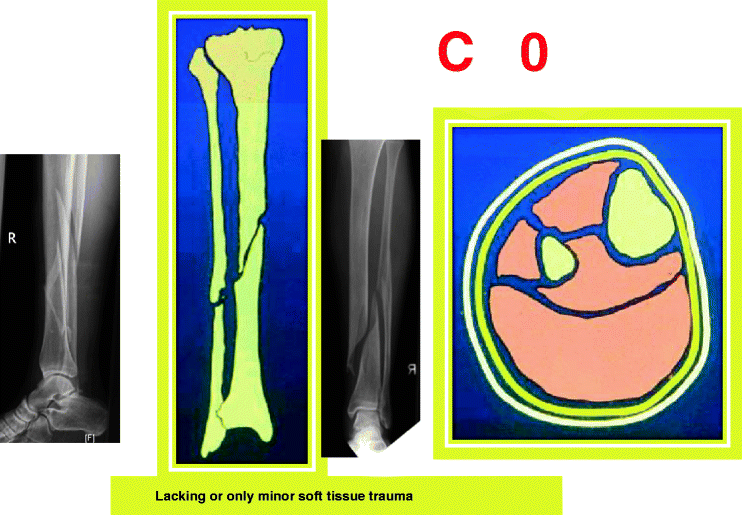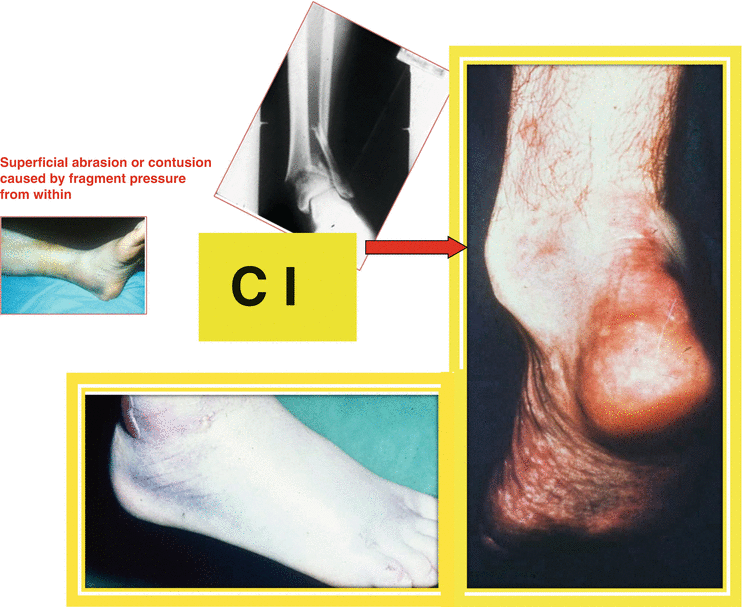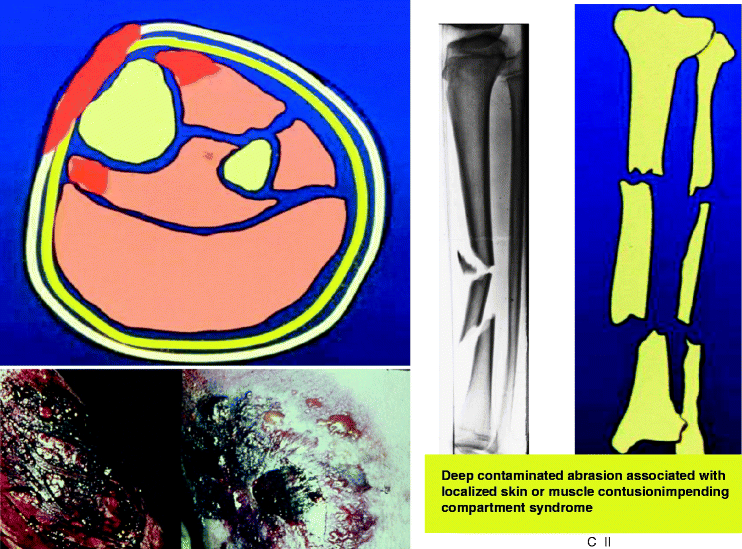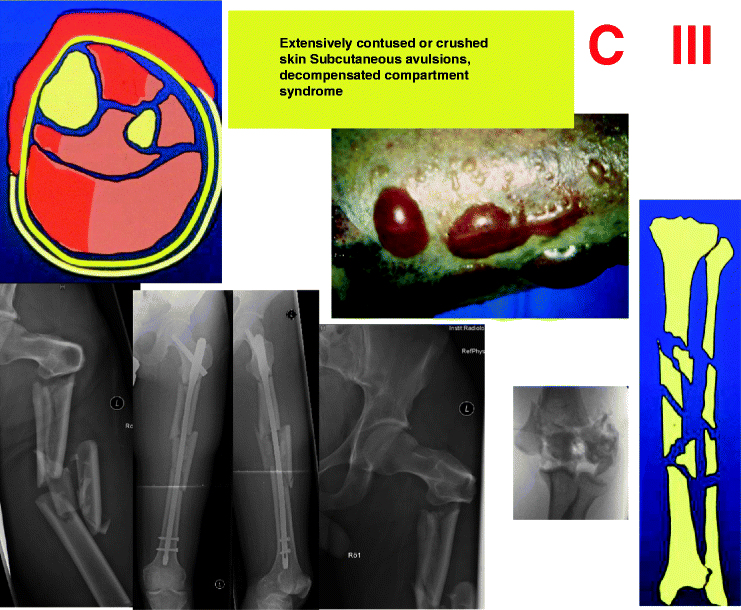Classification
Skin open + closed −
Soft-tissue damage
Fracture mild + severity mod ++ sev. +++
Contamination
Fr. C 0
−
−
+
−
C I
−
+
+ to ++
−
C II
−
++
+ to +++
−
C III
−
+++
+ to +++
−
10.4 Closed Fractures (Tscherne and Oestern) [2, 3]
Soft-tissue damage in closed fractures might often be more severe than open fractures. Grade 0 closed fractures (Fr. C 0) Soft-tissue damage is absent or negligible. The fracture is caused by indirect violence and has a simple configuration (Fig. 10.1). Torsion fractures of the tibia in skiers are typical of this category.


Fig. 10.1
Grade 0 closed fracture (Fr. C 0): Simple fracture configuration with little or no soft-tissue injury
Grade I closed fractures (Fr. C I): There is a superficial abrasion or contusion caused by fragment pressure from within. The fracture itself is of a mild to moderately severe configuration (Fig. 10.2). A typical example is the pronation fracture-dislocation of the ankle joint, in which soft-tissue lesions are caused by pressure from the fractured margin of the medial malleolus.

Fig. 10.2
Grade I closed fracture (Fr. C I): Superficial abrasion (shaded area), mild to moderately severe fracture configuration
Grade II closed fracture (Fr. C II): There is a deep, contaminated abrasion associated with localized skin or muscle contusion from direct trauma (Fig. 10.3). Impending compartment syndrome is included in this category. Generally, there has been direct violence producing a moderately severe fracture configuration. Segmental “bumper” fractures of the tibia are an example. Given the mechanism of injury, the soft-tissue lesions must be at least Fr. C I but are usually Fr. C II.

Fig. 10.3
Grade II closed fracture (Fr. C II): Deep, contaminated abrasion with local contusional damage to skin or muscle (shaded area), moderately severe fracture configuration (e.g., closed segmental fracture of the tibial shaft)
Grade III closed fracture (Fr. C III): The skin is extensively contused or crushed, and muscle damage can be severe. Other criteria for this category are subcutaneous avulsions, decompensated compartment syndrome, and rupture of a major blood vessel associated with a closed fracture (Figs. 10.4, 10.5, and 10.6). The fracture configuration is severe or comminuted. The contusional damage makes treatment of the soft-tissue injuries more difficult than in grade III open fractures [2].

Fig. 10.4
Grade IIII closed fracture (Fr. C III): Extensive contusion or crushing of skin or destruction of muscle (shaded area), severe fracture
10.5 Open Fractures
The evaluation and treatment of open fractures is governed both by the extent of soft-tissue injuries and by the level of wound contamination. The primary concern is not the size of the skin wound, but the degree of soft-tissue damage and extent of muscle contusions. Consequently, it may not be possible to make a definitive classification until the wound has been explored. In addition to classifications such as those of Tscherne and Oestern [3] and the AO classification, the most used classification for open fractures is the Gustilo and Anderson classification [1].
10.5.1 Classification (Gustilo and Anderson) [2]
Type I:
Wound is less than 1 cm with minimal soft-tissue injures.
Stay updated, free articles. Join our Telegram channel

Full access? Get Clinical Tree








